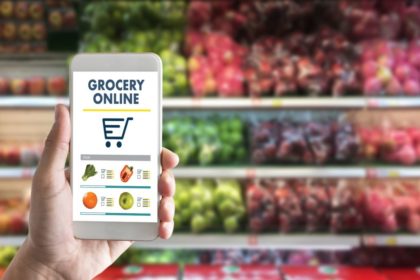
Don’t expect people immediately to dump their sourdough starters and crowd restaurants when the Covid-19 pandemic is over. In a U.S. consumer trends survey, 42% of people said they plan to cook more at home post-pandemic. This news is great for Consumer Packaged Goods (CPG) brands.
From record sales to supply shortages to new safety regulations, the retail grocery business was changed dramatically by the pandemic in 2020. But CPG companies experienced phenomenal growth: sales rose over 10% — more growth in one year than in the four-year period from 2016 to 2019. Though pandemic stockpiling (fingers crossed) likely will not recur in 2021 , CPG sales show no signs of slowing down. A mere 7% of Americans said they’d cook less after the pandemic than before. Consumers are buying CPGs more than ever. And they’re not staying loyal to their favorite brands — over 50% of respondents said that they are willing to try different products, and 66% of them stuck with those new brands.
Fermented CPG brands are in a great spot to take advantage of these trends. Healthy foods gained significant share in the food market in 2020. The pandemic propelled fermented food and beverage into the spotlight. More Americans began experimenting with healthier eating during the pandemic, and now they’ve adopted it as a habit.
What does this mean for the future of CPG brands? Here are four ways they must adapt to the “new normal”:
- Sales via Multiple Channels
Consumers won’t be shopping for your products only in brick-and-mortar stores. More consumers than ever are buying through ecommerce. Digital grocery sales were a niche category before the pandemic — now, CPG food and beverage sales are estimated to top $100 billion in 2021.
Food and beverage sales became the largest CPG online segment in 2020.
Direct-to-consumer (DTC) sales also shifted into high gear. Consumers turned to DTC during the pandemic to get their favorite products straight from the manufacturer. Good examples are kombucha producers selling bottles directly from the brewery and a sauerkraut maker shipping to consumers from their kitchen. An analysis by Retail Dive found direct-to-consumer businesses during the pandemic fared better than did traditional brick-and-mortar retailers.
But this doesn’t mean CPG brands should abandon selling in grocery stores.
According to Deloitte’s 2021 Consumer Product Industry Outlook, four out of five companies say “resetting their go-to-market strategy is critical to meeting their objectives; however, only half rated the current maturity of their related capabilities as high.” A majority of CPG companies surveyed say a bigger online and omnichannel presence will be a means of reaching consumers in 2021.
- Conscious Consumption
Consumers want to buy from brands that care about social and environmental issues. Societal inequality and environmental impact are big concerns to many consumers, and they are spending their dollars on ethical brands willing to put their money where their mouth is.
Deloitte found nine in 10 consumers say the pandemic is “an opportunity for large companies to hit ‘reset’ and focus on doing right by their workers, consumers, communities and the environment.” The CPG companies surveyed agree — three in four say establishing such initiatives in 2021 are a “strategy to place purpose alongside profit, express corporate values, and address heightened consumer attention to sustainability, social justice, equality, and environmental consciousness.”
Authenticity is key for proper brand activism. CPG companies need to be transparent with their consumers, integrating their social and environmental purposes into all parts of their business and organization. A brand that acts inconsistently will quickly lose trust with a consumer.
- Preference for Small Producers
CPG sales during the pandemic showed an interesting dichotomy: large companies had the highest dollar growth, but small companies – taken as a whole – gained meaningful share of market. A report by business consulting firm McKinsey & Company found market share of small companies during the pandemic increased from 18.2% in 2019 to 19.2% in 2020, while midsize businesses were flat and large companies fell from 51.2% to 50.5%.
More consumers did switch to new brands during the pandemic, but their primary reason was availability. This area is one where large brands have an advantage, as their greater resources should help them keep products on grocery store shelves.
- Supply Chain Improvements
Whether implementing new safety rules, finding sources with available products or switching packaging materials, every CPG brand had to adjust their supply chain in 2020. They are acting quickly to fix weaknesses exposed by the pandemic, and nine in 10 say they’re making significant progress.
CPG companies used to be praised for holding minimal inventories, but 2020 tested their resilience. Deloitte’s report explains: “Resilience is how companies keep their supply chains from breaking and restore them quickly when they do. It is also how they can gain the nimbleness and scalability to power new go-to-market approaches and innovative business models.”
Barb Renner, Deloitte’s vice chairman and U.S. leader of consumer products, says one of the biggest problems identified in their survey was an over-reliance on a small number of vendors. Most companies didn’t have backup plans. “If they were getting their product from a handful of vendors and one of those vendors had to close down, did they try to find an alternative source?” she asked.
CPG executives indicated supply chain resilience is important or very important for the company in 2021, with nine in 10 saying they are investing in improvements. Beyond creating reliable supply chains that can support their production, CPG companies need to be able to respond to demand and shift supply to new locations.
